This past March, John Kavanagh, a Republican member of the Arizona House of Representatives, insisted that his antidemocratic position on voting rights was about election security.
“Democrats value as many people as possible voting, and they’re willing to risk fraud,” the lawmaker said, rehashing former President Donald Trump’s baseless tub-thumping about mass voter fraud in the November election. “Republicans are more concerned about fraud, so we don’t mind putting security measures in that won’t let everybody vote – but everybody shouldn’t be voting.”
Then Kavanagh went even further, suggesting that not all eligible voters are of the same quality.
“Not everybody wants to vote, and if somebody is uninterested in voting, that probably means that they’re totally uninformed on the issues,” he added. “Quantity is important, but we have to look at the quality of votes, as well.”
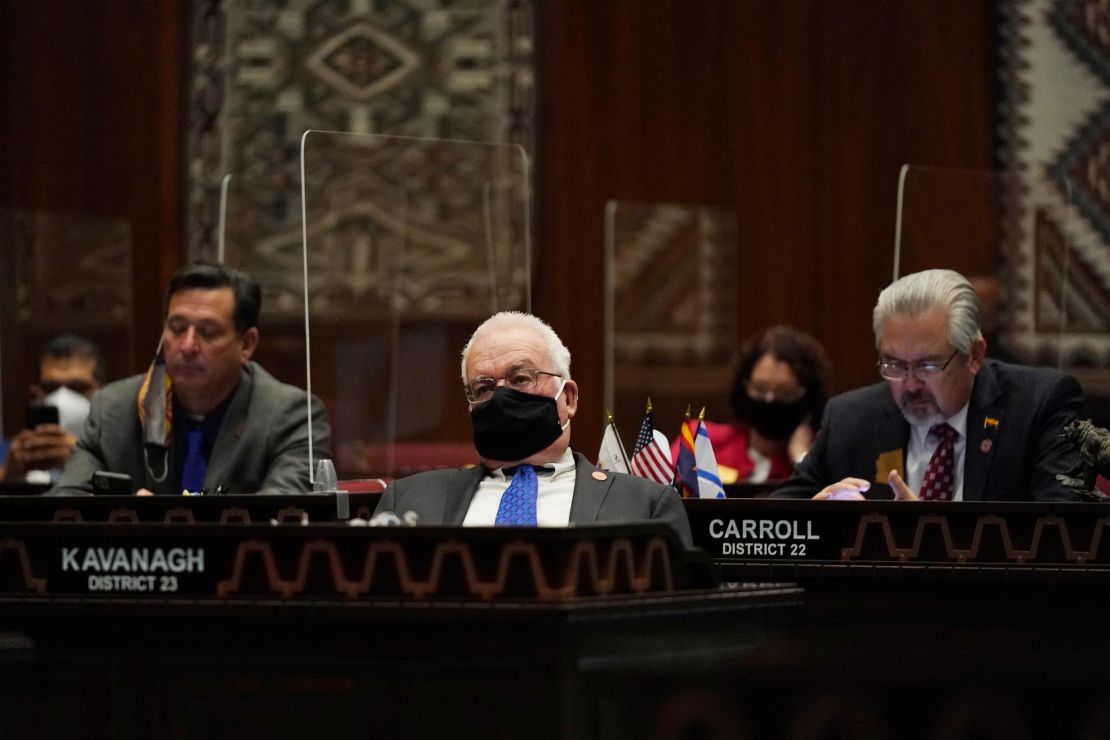
Everybody shouldn’t be voting. The quality of votes. Kavanagh’s support for voting restrictions is part of a much, much broader Republican effort to block access to the ballot box in the wake of President Joe Biden’s victory over Trump – but it’s also consistent with a long US history of political machinations intended to ensure power for White men and keep it at a distance for everyone else, most especially Black Americans.
Lawmakers in 47 states have introduced 361 bills this year with provisions that restrict voting access, according to a March 24 tally from New York University Law School’s Brennan Center for Justice.
(For a rough comparison: The Brennan Center’s tally in early February 2020 identified 35 restrictive bills in 15 states.)
“To paraphrase George Orwell,” Columbia University history professor Eric Foner told CNN, “there are those who feel that some voters are more equal than others. And that’s an attitude being implemented right now in some legislatures.”
To the surprise of no one, much of this maneuvering disproportionately targets voters of color – in particular Black voters, who played a critical role in helping Democrats secure both the White House and the US Senate.
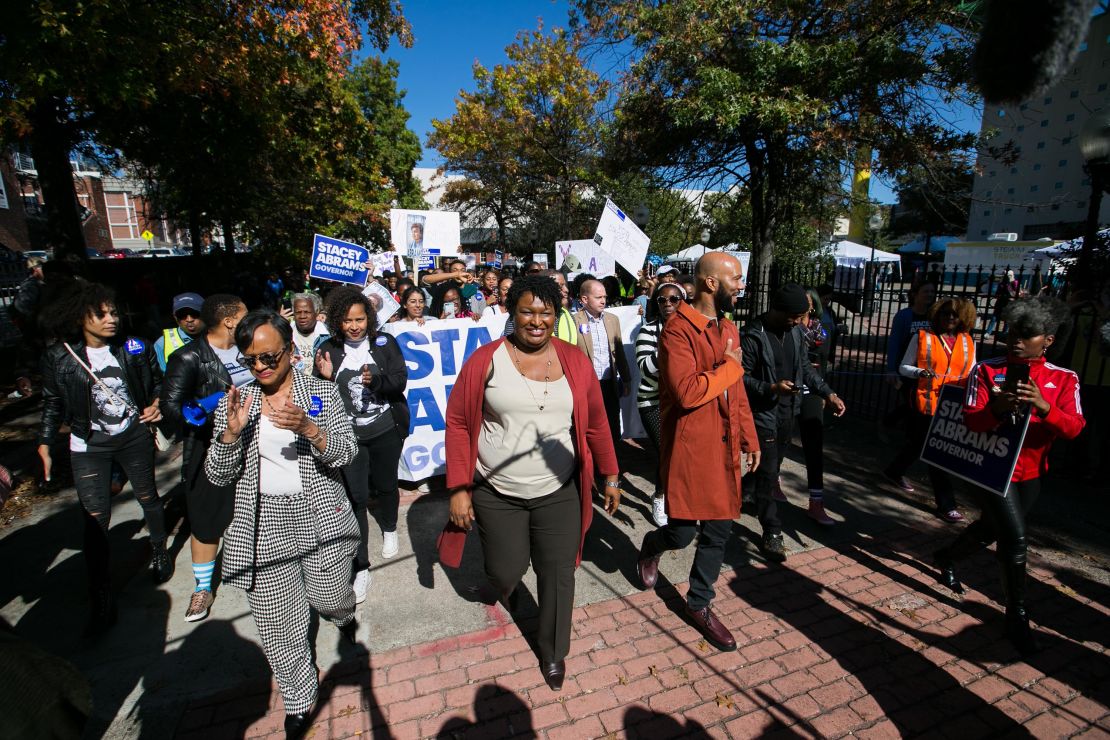
For instance, in Georgia – a state that last year backed the Democratic presidential nominee for the first time since 1992 – the Republican-controlled legislature briefly considered, then dropped, a proposal that would’ve limited early voting on Sundays, when Black churches traditionally hold their “souls to the polls” events, which are popular get-out-the-vote initiatives.
The current assault on participatory democracy is disturbing not because it’s new – but rather because the country has been here so many times before. US history is rife with examples, many of them violent, of attempts to quash Black voting power, stretching back to at least the mid-19th century.
Southern ‘redemption’
The crowning achievement of Reconstruction – the period that by some accounts began in about 1863, toward the end of the Civil War – was the ratification of the 13th, 14th and 15th Amendments, which together ended slavery, secured all persons due process and equal protection of law, and extended the right to vote to Black men.
Even during this groundbreaking time, Black Americans’ hard-fought rights remained a point of fierce dispute.
“It must be acknowledged that in the progress of nations, Negroes have shown less capacity for government than any other race of people,” President Andrew Johnson, a Democrat, railed in an 1867 message to Congress, less than three years before the ratification of the 15th Amendment. “No independent government of any form has ever been successful in their hands. On the contrary, wherever they have been left to their own devices, they have shown a constant tendency to relapse into barbarism.”
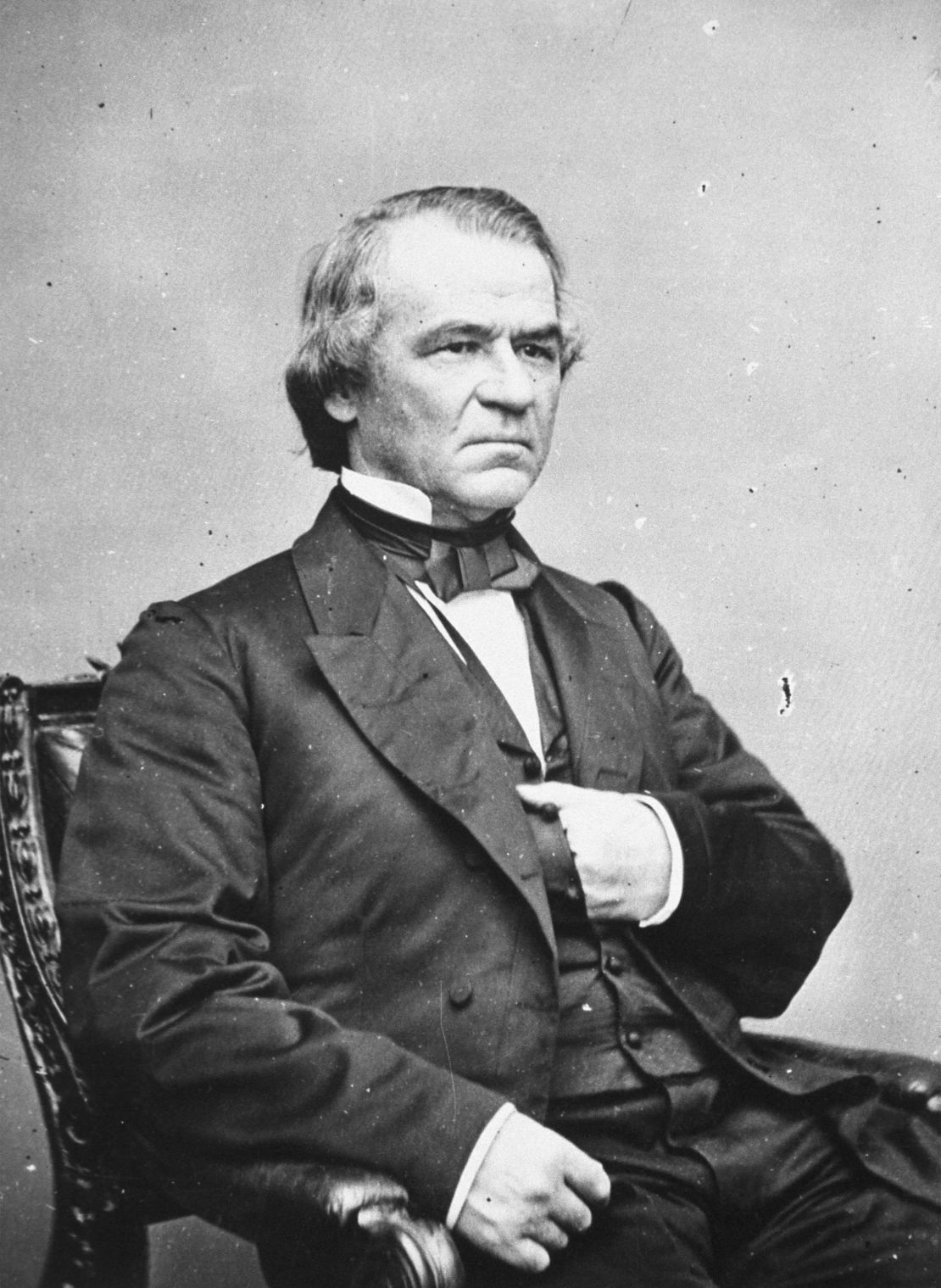
Many White Americans didn’t stop at racist invective. Most infamously in the South, there was also violence that challenged the newfound political strength of Black men.
One notable example occurred in 1868. In the spring of that year, Louisiana voters ratified a state constitution that enfranchised Black men. Many White people in Opelousas, a city in St. Landry Parish, didn’t like that, though. Over the course of about two weeks beginning on September 28, White men in the area killed around 250 people, mostly Black Americans.
The reason: to terrorize Black voters (and anyone who supported Reconstruction efforts) in the run-up to the November presidential contest between Ulysses S. Grant – whose incarnation of the Republican Party backed legislation supporting Black Americans – and Democrat Horatio Seymour, pitched as the “White man’s candidate.”
The brutality had its intended effect. Though Grant became the country’s 18th president, the former Union Army leader didn’t receive a single vote in St. Landry Parish.
(It’s worth remembering that today’s Republicans are the contemporary successors to the 19th-century Democrats. In fits and starts over much of the 20th century, the two parties realigned, propelled largely by the matter of civil rights reforms.)
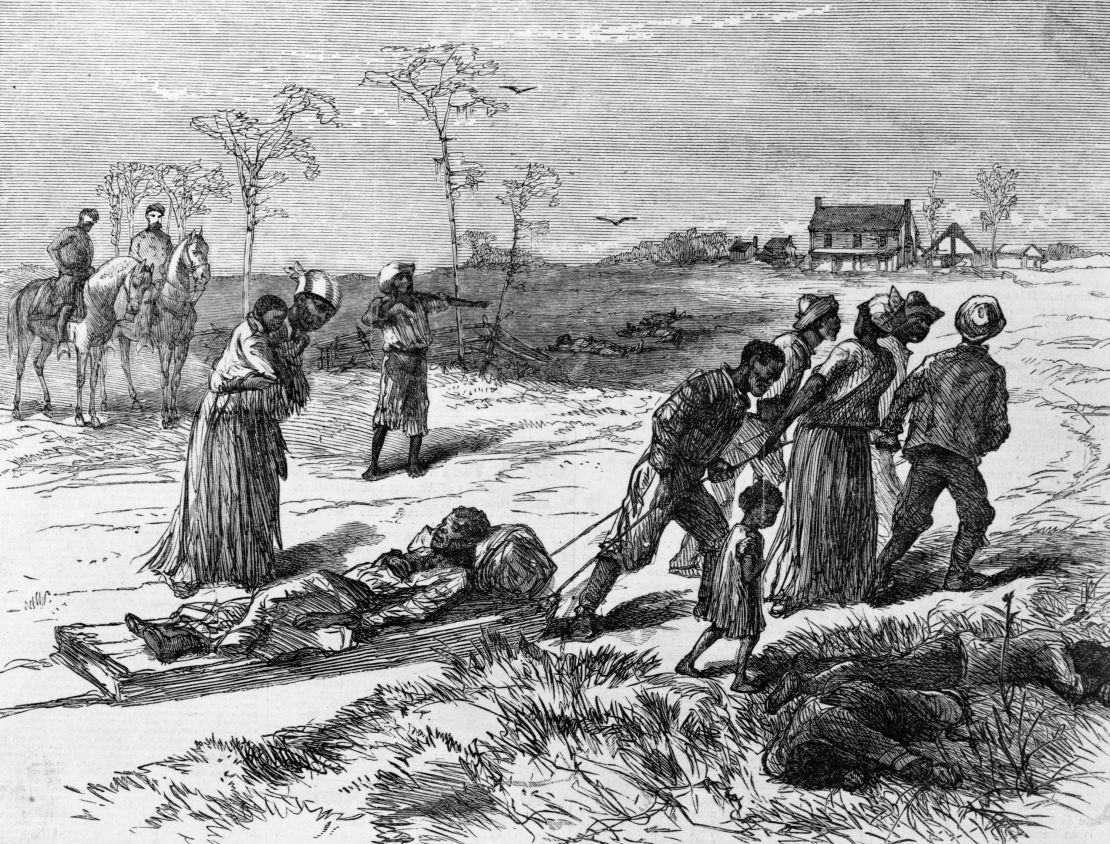
Such political violence continued with depressing regularity. Another key example came on April 13, 1873, when a mob of about 150 armed White men in Colfax, the seat of Grant Parish, Louisiana, killed between 60 and 150 Black Americans who had taken over the local courthouse and been defending it from possible Democratic seizure following the state’s controversial 1872 gubernatorial election.
“The Colfax Massacre taught many lessons, including the lengths to which some opponents of Reconstruction would go to regain their accustomed authority,” Foner documents in his 1988 book, “Reconstruction: America’s Unfinished Revolution, 1863-1877.”
As in 1868, power was at the heart of the issue. Most of the attackers were ex-Confederate soldiers, and many of them also belonged to the Ku Klux Klan. Through arson and murder, the group fought to bolster White supremacist policies and keep formerly enslaved people away from the polls – out of the polity.
Other methods
By the end of the 19th century, it was clear that there were other methods for restricting access to the ballot box.
Governments in the South, in complete violation of the 15th Amendment, began to take away Black men’s right to vote – not explicitly but obliquely, via an elaborate mix of, among other things, registration requirements, poll taxes, literacy tests and understanding clauses (where a would-be voter had to prove to a registrar that he understood the state’s constitution; amazingly, Black men never seemed to understand it).
The Reconstruction governments were gone. This was a new era of racial subjugation, captured in the term “Jim Crow.”
“The plan,” Emory University African American studies professor Carol Anderson writes in her 2018 book, “One Person, No Vote: How Voter Suppression Is Destroying Our Democracy,” “was to take years of state-sponsored ‘trickery and fraud’ and transform those schemes into laws that would keep Blacks away from the voting booth, disenfranchise as many as possible and, most important, ensure that no African American would ever assume real political power again.”
In other words, while the approach evolved – became just slightly less egregious – the aim never wavered.
Crucially, political violence remained rampant. It underpinned the Jim Crow racial regime.
On November 10, 1898, a White mob overthrew a legitimately elected biracial government in Wilmington, North Carolina, which had a flourishing Black community, and installed White supremacists. As many as 60 people were killed. Also lost during the massacre was the progressive Black newspaper The Daily Record; the horde set the building aflame.
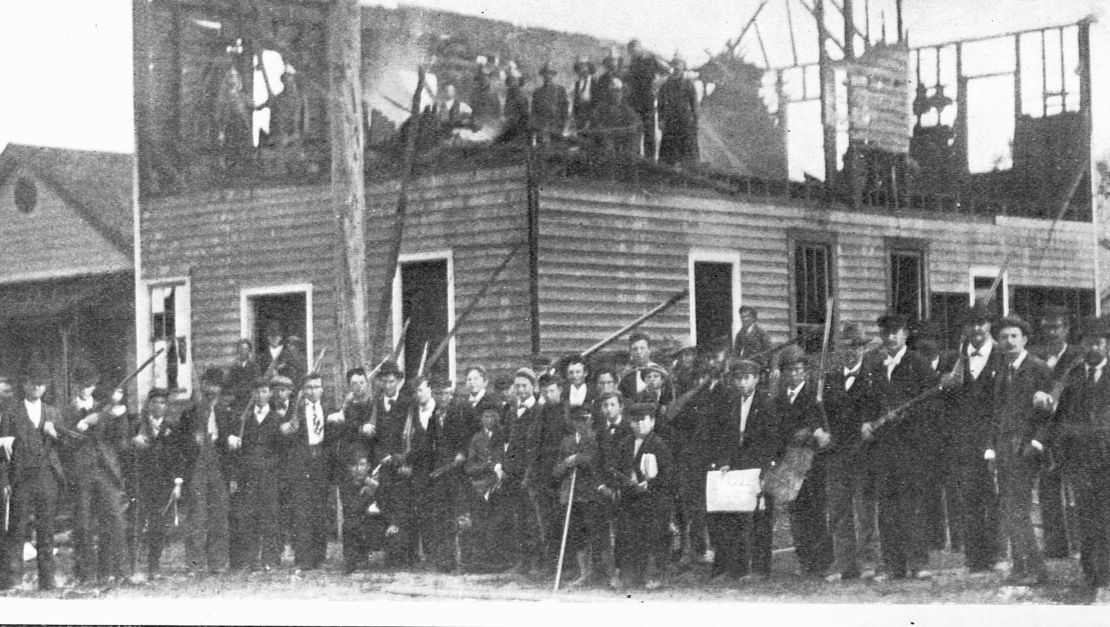
“The Constitution of the United States contemplated a government to be carried on by an enlightened people,” Democrat Alfred Waddell, who led the coup d’état, said the day before the assault, reading from the so-called White Declaration of Independence. “Its framers did not anticipate the enfranchisement of an ignorant population of African origin. … We will no longer be ruled, and will never again be ruled by men of African origin.”
Writing for Time magazine last year, journalist David Zucchino, author of the 2020 book, “Wilmington’s Lie: The Murderous Coup of 1898 and the Rise of White Supremacy,” fit the episode into a broader story of political turmoil.
“The 1898 coup capped a months-long White Supremacy Campaign in North Carolina designed to strip Black men of the vote and remove them from public office forever,” he explained.
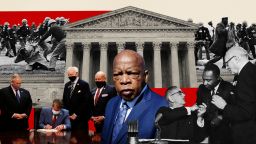
It wasn’t until the mid-20th-century civil rights movement – when President Lyndon B. Johnson, a Democrat, signed into law the Civil Rights Act of 1964 and the Voting Rights Act (VRA) of 1965 – that there was something of a reversal of systematically preventing Black Americans across the South from staking a claim to US democracy through the ballot box.
Notably, there was also what University of Arkansas political science professors Angie Maxwell and Todd Shields call the “Long Southern Strategy,” which was a series of decisions on religion, race and feminism that Republicans made in an effort to court White Southern voters. While the strategy began in earnest in the ’60s, political leaders reformed it over the course of several decades.
Former Republican strategist Lee Atwater summarized the racial dimension of the strategy the following way.
“You start out in 1954 by saying, ‘N****r, n****r, n****r.’ By 1968, you can’t say ‘n***r’ – that hurts you, backfires,” he said in 1981. “So you say stuff like ‘forced busing,’ ‘states’ rights’ and all that stuff. You’re getting so abstract now (that) you’re talking about cutting taxes. And all these things you’re talking about are totally economic things, and a byproduct of them is (that) Blacks get hurt worse than Whites.”
‘This is Jim Crow in new clothes’
The progress achieved during the civil rights movement, which many historians refer to as the Second Reconstruction, is in jeopardy – and has been for some time.
For instance, in 2013, the US Supreme Court’s 5-4 decision in the landmark case Shelby County v. Holder freed jurisdictions with histories of racial discrimination in voting from having to gain federal approval, called “preclearance,” before changing their election laws.
By doing away with direct federal oversight of election laws, the Court empowered wannabe John C. Calhouns and George Wallaces.
Chief Justice John Roberts, who delivered the majority opinion, backed the decision by writing that “racial disparity in (voter registration and turnout numbers in the covered jurisdictions) was compelling evidence justifying the preclearance remedy and the coverage formula. There is no longer such a disparity.”
Not everyone on the Court agreed. Underscoring the wrongheadedness of the decision, the late Justice Ruth Bader Ginsburg wrote in her powerful dissent that “throwing out preclearance when it has worked and is continuing to work to stop discriminatory changes is like throwing away your umbrella in a rainstorm because you are not getting wet.”
The fallout from Shelby County ended up illustrating Ginsburg’s point, not Roberts’. The decision paved the way for more restrictive voting laws.
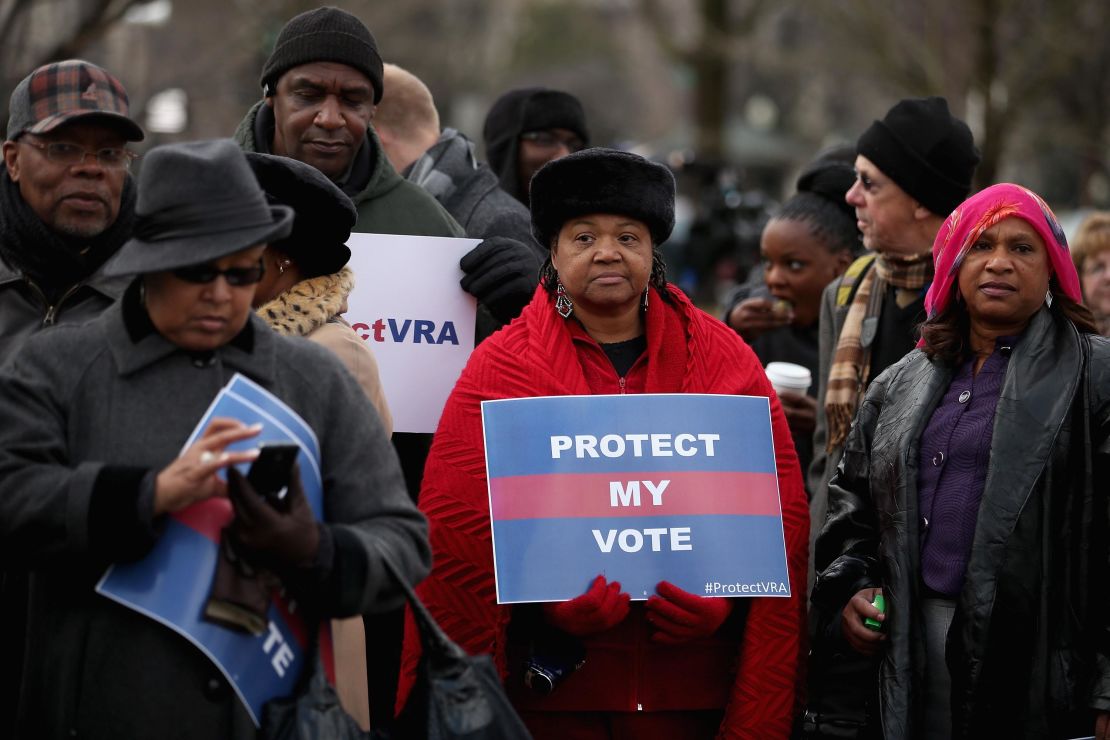
“One of the lessons, unfortunately, was what can happen to your rights in the hands of a conservative Supreme Court,” Foner told CNN.
Of course, the battle over voting rights isn’t limited to one Court decision. Currently, Arizona’s attorney general and its Republican Party are the plaintiffs in Brnovich v. Democratic National Committee, a case that, as my CNN colleague Joan Biskupic has explained, could allow the new 6-3, conservative-liberal bench to continue chipping away at the VRA.
And across the country, Republicans are shepherding a variety of draconian bills through state legislatures, bills that would, among other things, shrink the number of early-voting days, impose stricter voter identification requirements and limit ballot drop boxes, all of which are measures that observers say would disproportionately disadvantage Black voters and contribute to the predominantly White conservative doom loop.
The avowed reason for proposing such legislation is election security. But that explanation is little more than a canard, in light of the fact that Americans weren’t really worried about election security until Republicans started talking about it, and Republicans didn’t start talking about it until they started losing recent elections.
“There’s a growing trend on the right in which any election they lose is dismissed as illegitimate,” Princeton University history professor Kevin M. Kruse said. “The proponents of voter suppression have created a fiction in which they are the victims of mass voter fraud. They are never able to provide any proof of that, but they believe it all the same.”
But voting rights advocates aren’t taking all of this lying down. HR 1 (the For the People Act) and HR 4 (the Voting Rights Advancement Act) are two bills working their way through the US Congress that could help check Republicans’ voter suppression efforts.
The former, which the Democratic-led House passed in March, would expand voting via policies such as automatic and same-day voter registration. The latter would revise parts of the VRA that were gutted as a result of the 2013 Shelby County decision. Both bills, however, face long odds in the 50-50 Senate at least in part because of the filibuster, a tactic that’s long been used to thwart civil rights progress and bolster White supremacy.
In his maiden floor speech, newly elected Democratic Sen. Raphael Warnock – who, along with Sen. Jon Ossoff, also a Democrat, was declared a winner in Georgia’s January 5 runoff elections on the same day that a Confederate flag-waving mob laid siege to the US Capitol – placed the contemporary battle over voting rights, and over Black political power, into a wider historical context.
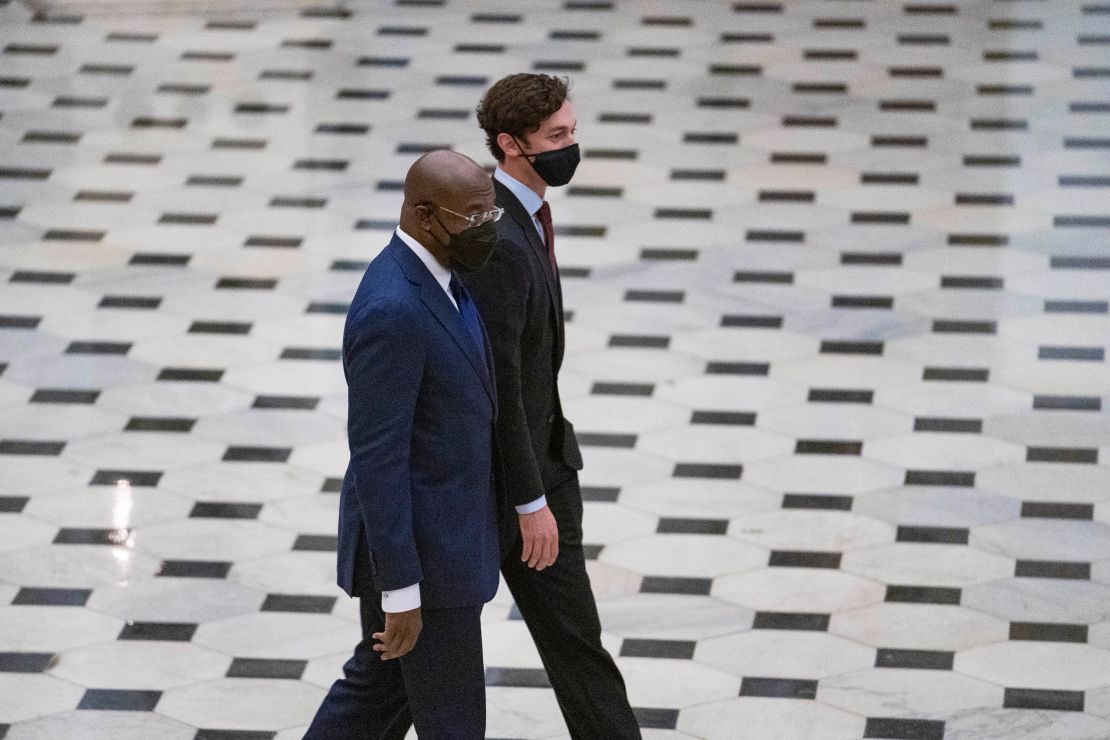
“We are witnessing right now a massive and unabashed assault on voting rights unlike anything we’ve ever seen since the Jim Crow era,” Warnock said in March. “This is Jim Crow in new clothes.”
Warnock’s focus on the past makes good sense.
After all, “if one cannot use the past, one cannot function in the present,” James Baldwin argues in “Nothing Personal,” his 1964 book with Richard Avedon. “And so one can never be free.”
The task today is to use the past – to understand its racial hierarchies and how they persist – in order to create a tomorrow in which everyone is equal.
CNN’s Nicquel Terry Ellis contributed to this report.

